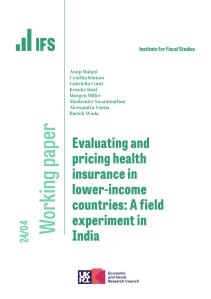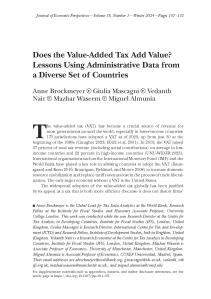On 8 October 2021, 136 countries agreed to a set of global tax reforms under the Inclusive Framework on Base Erosion and Profit Shifting (BEPS), an initiative led by the G20 and the Organisation for Economic Co-operation and Development (OECD). The reforms, which have been developed over several years, were initially intended to address the tax challenges arising from the digitalisation of the economy, but have wider implications for both digital and non-digital businesses in countries around the world.
In this paper, we look at why a global deal was needed, explain how the reforms are likely to work in practice and set out the potential impacts of the global deal, with a focus on lower-income countries. We find that the reforms are significant but do not fundamentally change the international tax system, as other proposals would have done. The revenue impacts are uncertain but could be relatively modest. Tax competition and tax avoidance will continue. Lower-income countries can benefit from the reforms but will need to continue to build capacity to tackle international tax avoidance.
Key messages
- 136 countries have agreed to global tax reforms to address challenges from the digitalisation of the economy and reduce tax competition. The reforms are due to be implemented from 2023.
- Pillar One of the reforms will give countries new taxing rights over the largest multinationals regardless of physical presence. This will affect only the 100 largest multinationals and will have limited impact on overall tax revenues.
- The Pillar Two global minimum tax of 15% will directly benefit high-income countries where multinationals are resident. The benefits to lower-income countries depend on multinationals reducing tax avoidance. OECD figures showing revenue gains likely overestimate this.
- The reforms are significant but do not fundamentally change the system. Tax competition and tax avoidance will continue. Lower-income countries can respond in three ways. First, avoid taxing multinationals below the minimum 15% rate, although investor–state agreements could make this difficult. Second, use the new Subject to Tax Rule to tackle profit shifting from high-risk payments made to related parties. Third, continue to invest resources and build capacity to tackle international tax avoidance.









